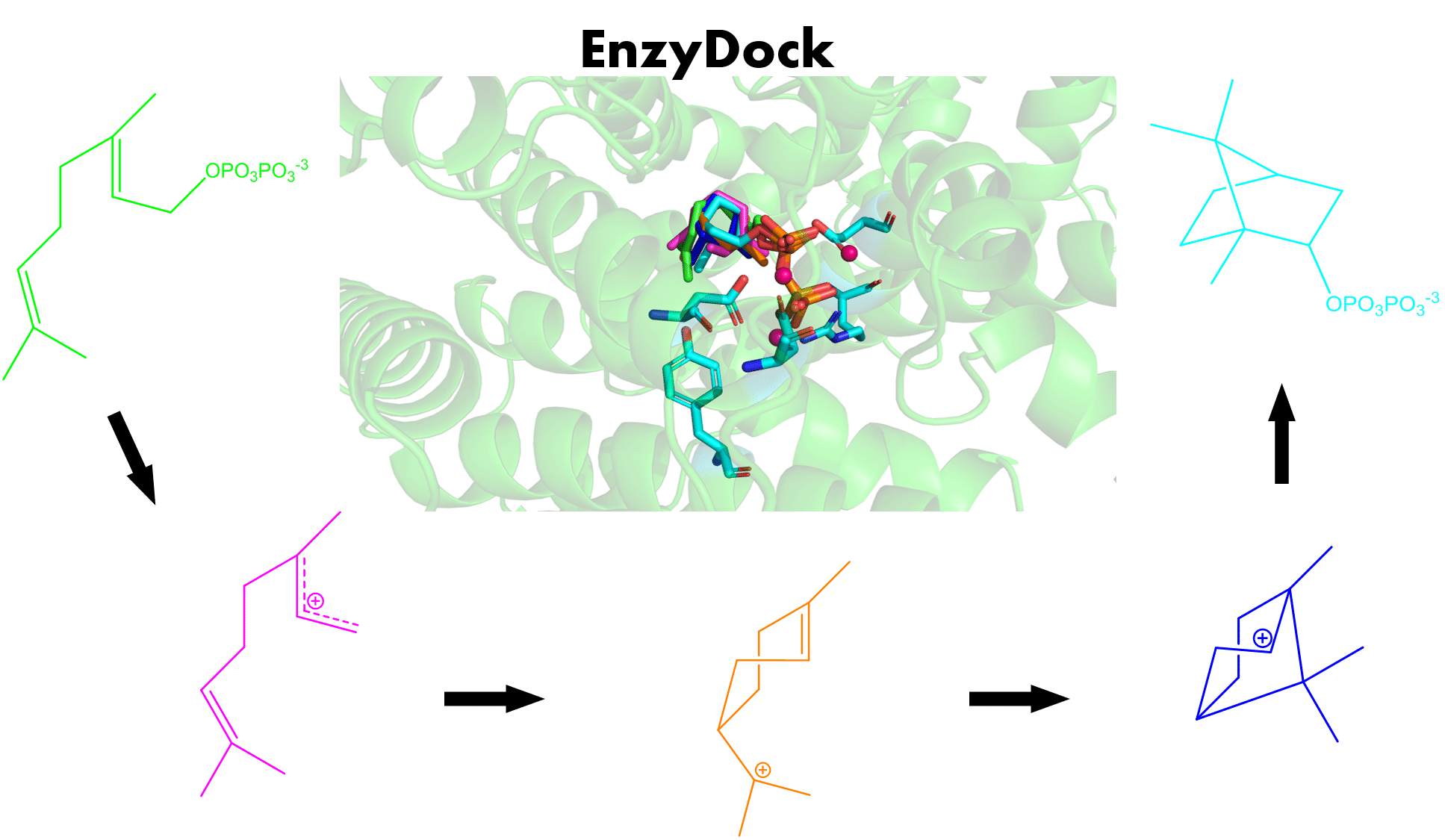
EnzyDock: Protein-ligand docking of multiple reactive states along a reaction coordinate in enzymes
Enzymes play a pivotal role in all biological system.1 These biomachines are the most effective catalysts known, dramatically enhancing the rate of reactions by more than 10 orders of magnitude relative to the uncatalyzed reactions in solution.2 Predicting the correct, mechanistically appropriate binding modes for substrate, product, as well as all reaction intermediates and transition states, along a reaction pathway is immensely challenging and remains an unsolved problem. In the present work, we developed an effective methodology for identifying probable binding modes of multiple ligand states along a reaction coordinate in an enzyme active site. The program is called EnzyDock, and is a CHARMM-based3 docking program that includes a series of protocols to predict the chemically relevant orientation of substrate, reaction intermediates, transition states, product, and inhibitors. EnzyDock is based on simulated annealing molecular dynamics, multistate consensus docking, and can use a range of user-defined constraints and restraints, classical force field potentials, as well as a range of hybrid quantum mechanics-molecular mechanics potentials. Herein, we apply EnzyDock to three different kinds of problems. First, we study two terpene synthase reactions, namely bornyl diphosphate synthase (BPPS)4 and the bacterial diterpene synthase CotB2.5 Second, we use EnzyDock to predict reaction coordinate states in a Diels-Alder reaction in the enzyme spirotetronate AbyU. Finally, we study a case of covalent docking in the cysteine protease cruzain. For all systems we predict binding modes that are consistent with experimental observations, as well as with theoretical modeling studies available in the literatures. EnzyDock provides a platform for generating useful and reliable starting points for in-depth multiscale modeling projects and rational design of non-covalent and covalent enzyme inhibitors.

Powered by Eventact EMS